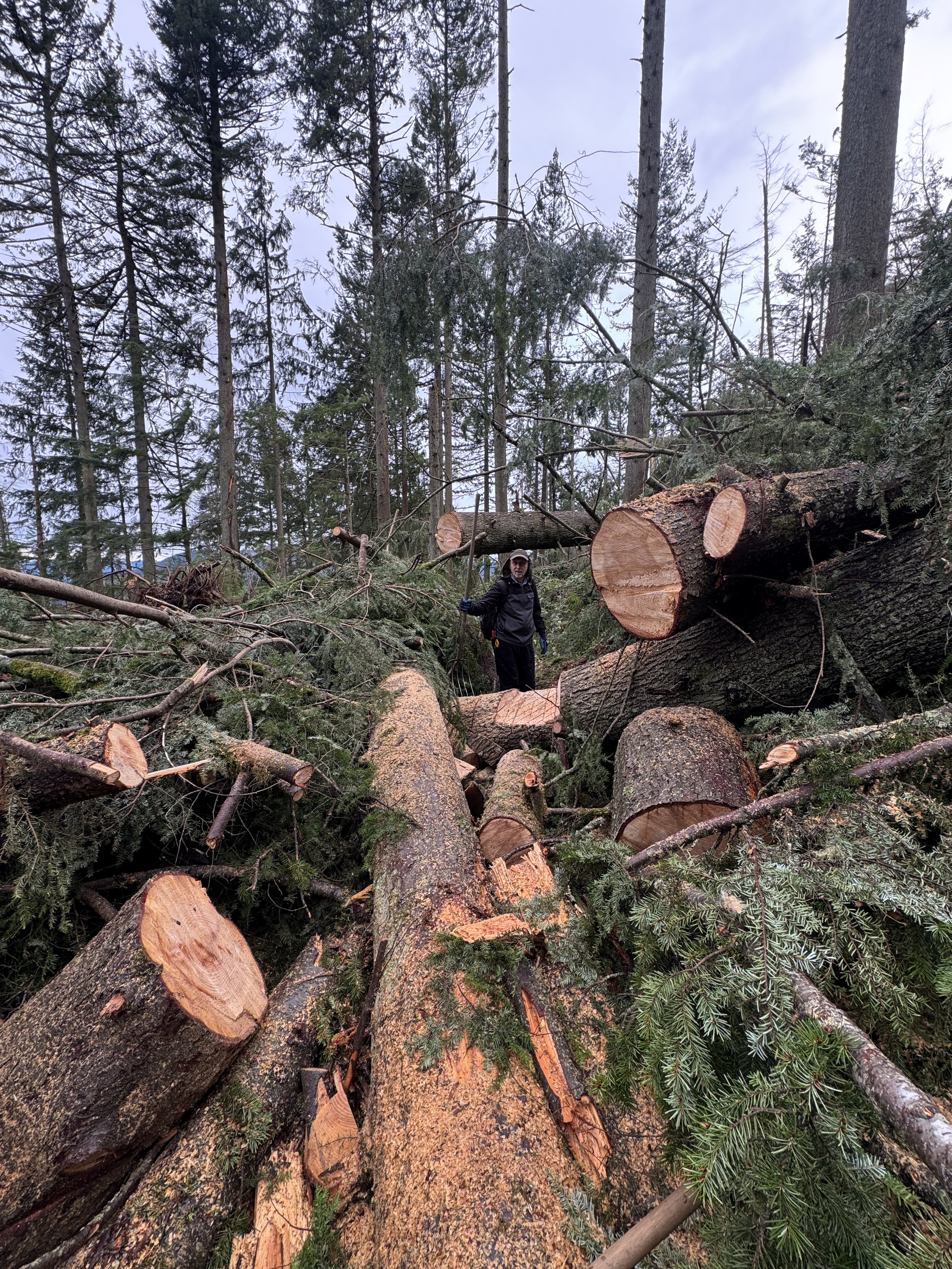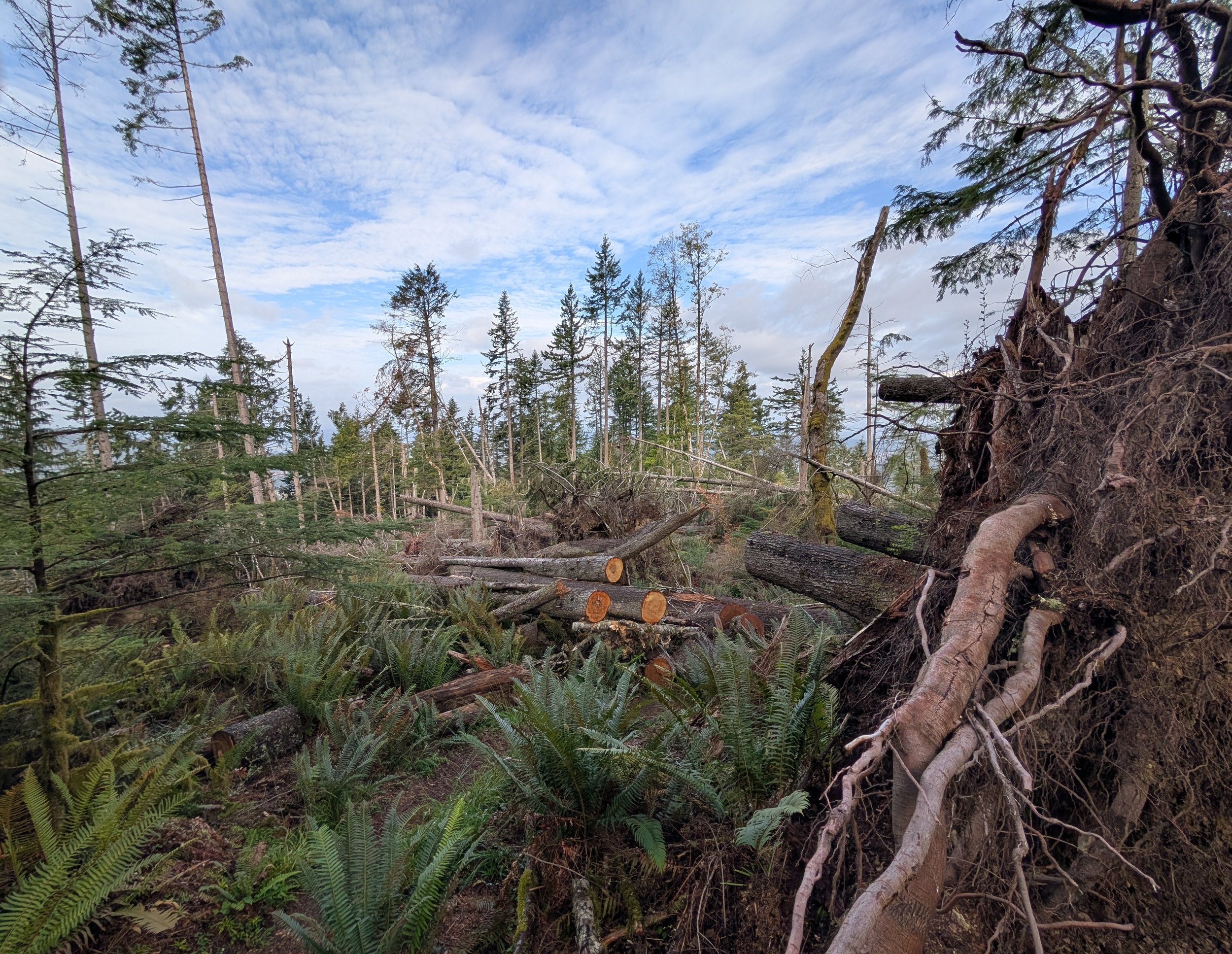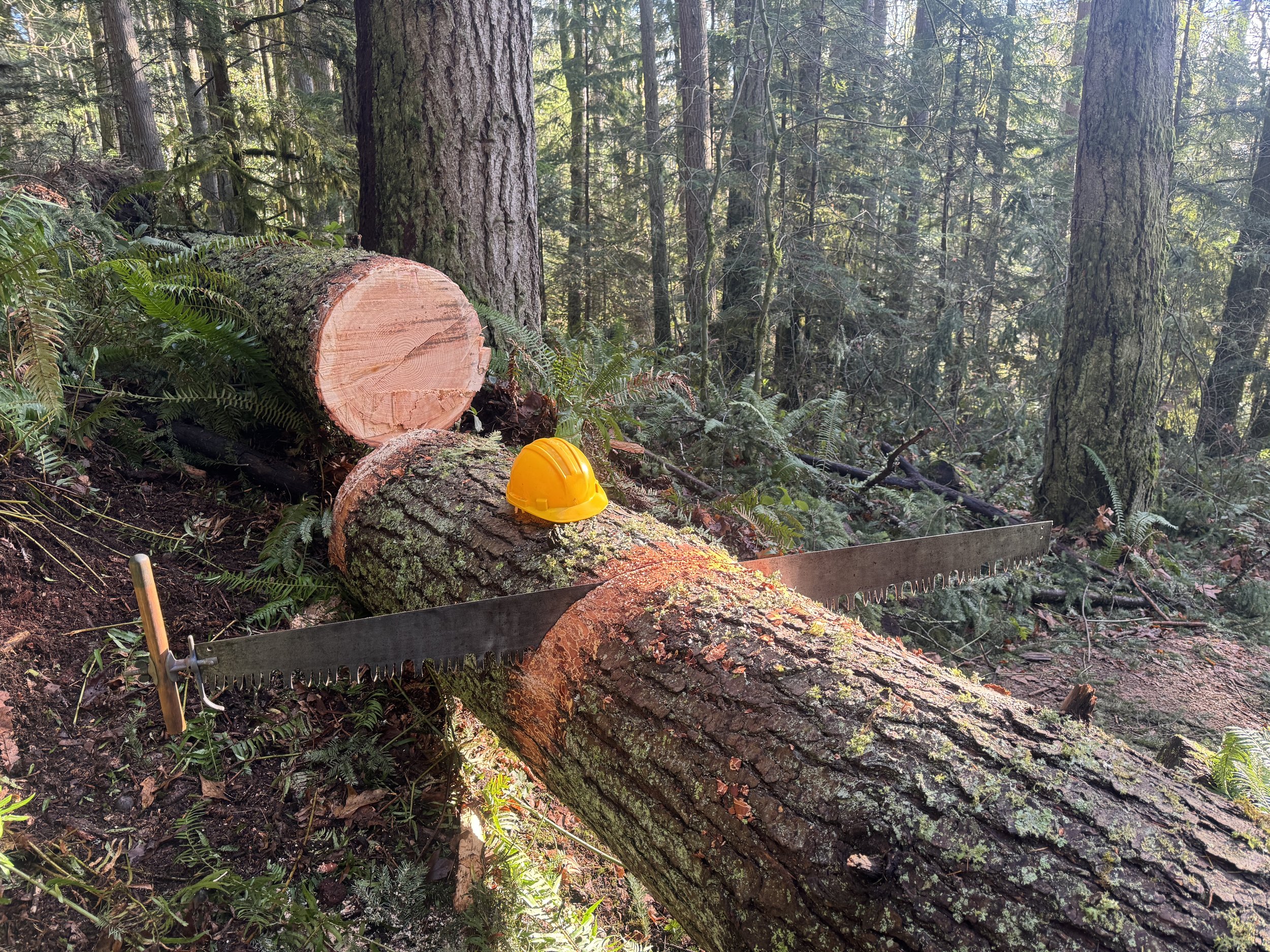Rising After the Storm: Rebuilding Squak Mountain
Old Griz Trail immediately after the bomb cyclone. Photo courtesy of Mark Griffith.
On November 19, 2024 an extratropical cyclone swept the Issaquah area with powerful winds from the east. Strong winds from the east are unusual in our Issaquah Alps, particularly winds over 50mph. As a result, many trees were knocked down throughout the region. Restoring the power grid required the tireless efforts of crews who worked up to 20 hours a day for over a week. As most of us were focused on surviving the aftermath of the storm, it took time to fully realize the damage to our beloved trails. Within days IATC realized that no trail system escaped unscathed. Huge trees were down on Big Tree Ridge on Cougar Mountain. The One View Trail on Tiger Mountain had been decimated. Every trail had sustained at least minor damage. But, worst of all, we feared that the trail system on Squak Mountain’s east side might be gone forever.
Old Griz Trail immediately after the bomb cyclone. Photo courtesy of Mark Griffith.
Our community came to work, dragging branches, sawing blowdown, and providing reports of where we should focus our efforts. Within days, the trail system on Cougar was navigable again. Within weeks, the hard work of the Washington State Department of Natural Resources (DNR) ensured that trails on Tiger could be navigated on foot again. The efforts of the trail community were incredible and high yield. Yet, we were still unsure of what could be done about Squak Mountain’s decimated east side. One only needs to look at Squak from Issaquah to see the damage–look along the skyline on the east and you’ll see how what was a smooth treeline is no longer so.
Eastridge Trail in progress. Photo courtesy of Max McDermott.
Squak was uniquely hit by the storm winds. Although I found no data on windspeeds, hiking through the damage I wouldn’t be surprised to learn Squak was hit by hurricane force winds. It’s difficult to imagine what the storm was like for our forest creatures. Some areas have more trees down than remain standing–as trees fell they took others down with them. Huge trees were snapped off and their tops fell to the earth. The East Ridge trail above 1000 feet had sections where tread could not be found at all, while the Summit trail was covered in deep debris. The Eastside trail had significant tangles of large trees that were extremely challenging to navigate. Hikers who made the harrowing scramble through the Old Griz trail could not find tread for much of the route and reported needing to climb from tree to tree without touching the earth. Two landslides swept away portions of steep terrain of the upper Phil’s Creek trail. Areas that were thickly forested now had a view of the valley below, and of Tiger Mountain. When I first crawled and scrambled through the damage I cried–every trail on the mountain had huge blowdowns, but the Eastside areas were by far the worst hit by the easterly winds.
Old Griz Trail after cleanup. Photo courtesy of Selena Eon.
As the enormity of the damage became clear, a community coalition formed to create a plan. The Issaquah Alps Trails Club (IATC) was able to connect Washington State Parks, the City of Issaquah, and expert hikers with intimate knowledge of the trail system. The affected trails were mostly State Parks land, but the Eastside trail is also managed by the City of Issaquah, which necessitated coordinated efforts. Shawn Tobin, the Area Manager of the Cascade Foothills Area State Parks, scheduled biweekly meetings at Lake Sammamish State Park. Helpers came out of the woodwork and soon we had an expert trail crew lead by IATC Volunteer of the Year Terry Swiakowski working on Squak Mountain. At first we weren’t sure if the trail system would be recoverable, particularly the hardest hit Old Griz and Phil’s Creek.
Big Tree Ridge in progress. Photo courtesy of Max McDermott.
Watching the meetings first hand, my heart healed every day I witnessed the dedication of our public lands stewards. We all knew how much work needed to be done, and with the widespread damage there were also other priorities in the region as well. Yet, bit by bit, we took on Squak together in an incredible community effort. I have such gratitude for the work of State Parks, they never gave up on Squak Mountain.
East Ridge Trail after cleanup. Photo courtesy of Selena Eon.
A progressive system formed. State Parks expert sawyers cleared blowdowns, then combined State Parks/IATC work parties cleared debris. Some tangles of blowdown required the talents of the specialized State Parks arborist team who services the entire state. Whenever possible, the arborists were sent to Squak to clear the most difficult sections. Every week brought improvements to the trail system, and as it became possible to navigate a trail again, trail closure signs came down. A bypass was created for the lower section of Old Griz so hikers could connect to the repaired section from the Eastside trail. The hikers I met in the area smiled when they told me how they worried the system was beyond repair, but “look at it now!”.
By summer, it was possible to hike all of the Squak Mountain official trail system again–a truly incredible community effort. Although the trails are now all hikeable, much work remains to repair trail damage. IATC continues to host regular work parties to continue our collaborative efforts to remove blowdowns and debris and smooth out tread where uprooted trees have left holes. The restoration of Squak Mountain is a beautiful example of how much can be achieved with community effort and with a dedicated group of volunteers like IATC leading the way.
Learn more about emergency management and preparedness resources and services available to our community through the City of Issaquah and King County. Discover opportunities to get involved with the Issaquah Alps Trails Club and contribute to local efforts.






